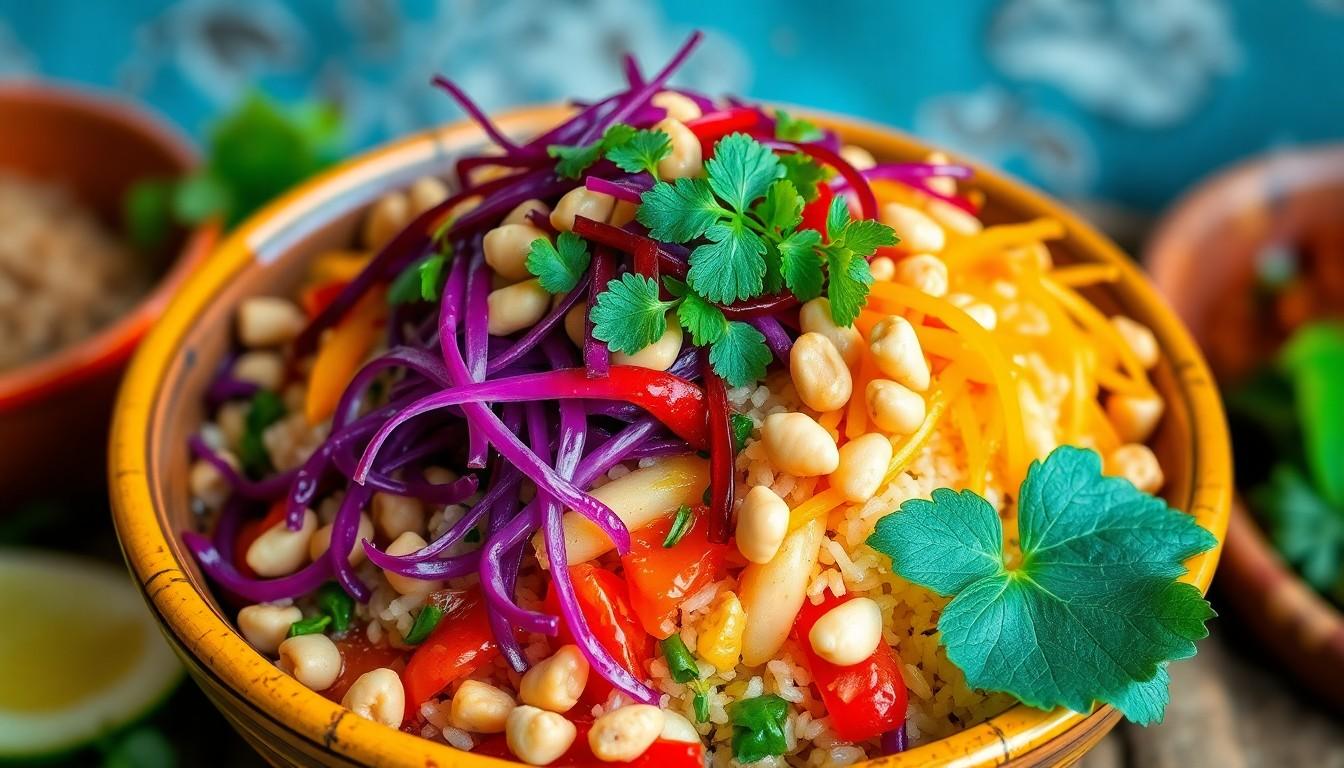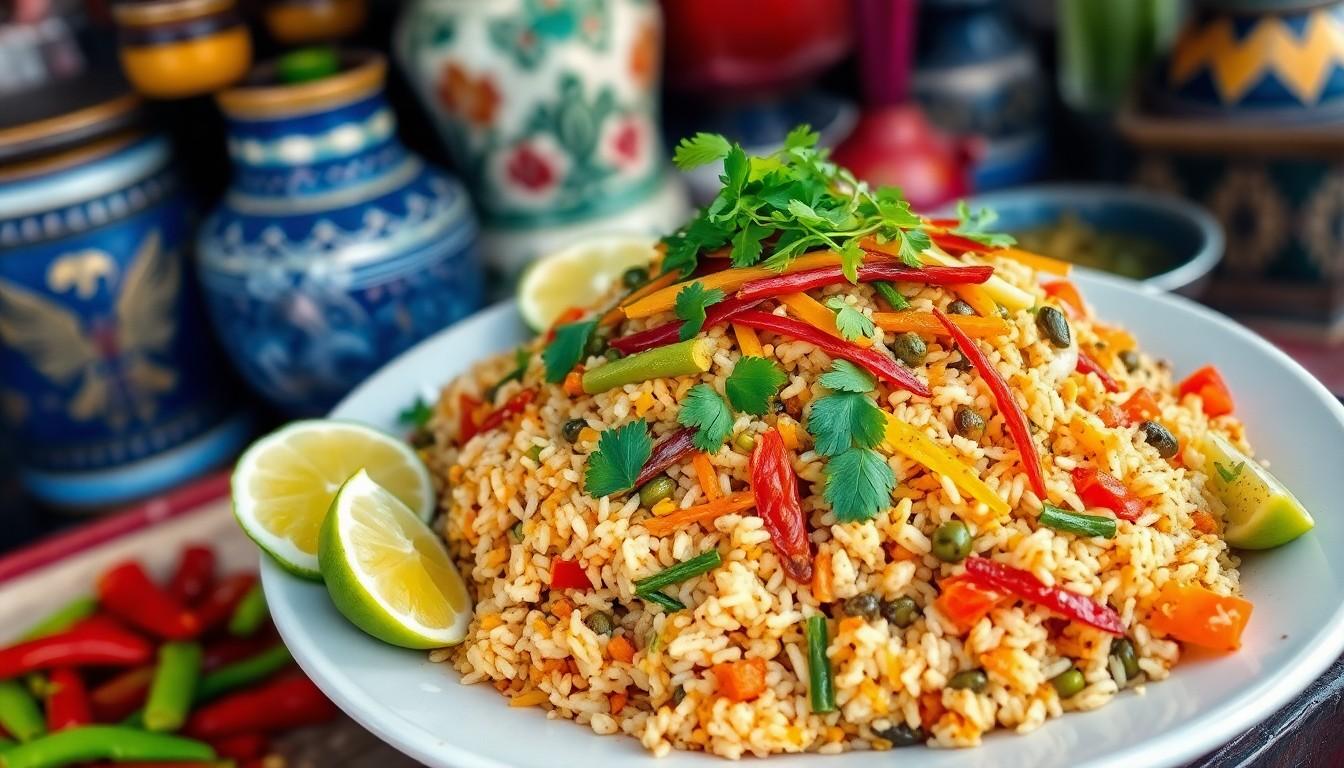In the vibrant culinary landscape of Myanmar, hingagyi stands out like a peacock at a pigeon convention. This delightful dish, often overshadowed by its more famous counterparts, is a hidden gem that deserves a spot on every food lover’s radar. Imagine a bowl of warm, savory goodness that dances on your taste buds and makes your heart sing—yes, that’s hingagyi for you!
Overview of Hingagyi
Hingagyi stands out as a delicious dish from Myanmar, often unrecognized yet rich in flavor. This savory concoction typically contains a mixture of rice and a variety of spices, creating a unique taste that captivates the palate. Ingredients frequently include coconut milk, vegetables, and minced meat or seafood, which enhance its overall richness.
Fans of hingagyi appreciate its versatile nature, as it can be served in various ways, such as steamed, fried, or even in a curry form. Traditional preparations emphasize balancing flavors, often resulting in a harmony of sweetness and saltiness. Street vendors and local eateries across Myanmar frequently feature hingagyi, showcasing its popularity among everyday diners.
Many people enjoy hingagyi at special occasions, making it a comforting favorite during family gatherings or festivals. The dish is not just a staple; it serves as a conversation starter, connecting individuals to their cultural roots. Cookbooks dedicated to Myanmar cuisine often include recipes for hingagyi, highlighting its nutritional value and rich texture.
Regional variations exist, each adding a specific twist to the dish. Some adaptations even incorporate additional herbs, reflecting local agricultural influences. Diners consistently rave about hingagyi’s ability to evoke nostalgia while offering a delightful culinary experience.
Ingredients Used in Hingagyi

Hingagyi features a variety of ingredients that contribute to its unique flavor and texture. Key components define this dish’s character.
Main Ingredients
Rice forms the base of hingagyi, providing substance and heartiness. Spices like turmeric and chili powder deliver warmth and depth. Coconut milk adds creaminess, enhancing the overall taste. Various vegetables, such as carrots and green beans, introduce freshness and color to the dish. Minced meat, often chicken or pork, or seafood, like shrimp, infuses hingagyi with protein, creating a satisfying meal. These primary ingredients work together to create a balance of flavors and textures.
Optional Ingredients
Chefs sometimes incorporate optional ingredients to personalize hingagyi. Garlic and onion contribute aromatic richness, elevating the overall fragrance. Fresh herbs like cilantro or mint introduce additional layers of flavor, refreshing the palate. Some cooks utilize different meats or tofu for varying protein options. Peanuts provide a crunchy texture while enhancing flavors as a topping. Regional variations might include local vegetables and spices, offering unique twists on this beloved dish. These optional elements allow flexibility in preparation and presentation.
Preparation Method
Hingagyi preparation involves specific techniques and creative options that highlight its unique character.
Cooking Techniques
Various methods suit hingagyi preparation. Steaming ensures the rice retains moisture, resulting in a tender texture. Frying adds a delightful crispness, enhancing flavors through caramelization. While making curry can create a rich, aromatic dish, simmering ingredients together develops a harmonious blend of tastes. Additionally, using coconut milk introduces creaminess, enriching the overall mouthfeel. Each technique allows for personal preferences and regional variations, making hingagyi adaptable to different culinary styles.
Serving Suggestions
Hingagyi serves well in various contexts, appealing to diverse tastes. When plated, it pairs wonderfully with fresh, colorful salads, which add crunch and freshness. Adding lime wedges provides a zesty contrast, brightening each bite. For a heartier meal, complementing hingagyi with pickled vegetables enhances its savory profile. Street vendors often offer it with hot sauce, bringing an extra layer of heat. Sharing this dish during gatherings fosters a sense of community, allowing everyone to enjoy a comforting taste of Myanmar’s culinary tradition.
Cultural Significance of Hingagyi
Hingagyi holds a special place in Myanmar’s culinary landscape, reflecting the rich traditions of the region. Celebrated during festivals or family gatherings, this dish serves as a symbol of hospitality and cultural identity. Food often plays a vital role in uniting people, and hingagyi is no exception. Families frequently prepare this dish together, fostering bonds and creating cherished memories through shared experiences.
Regional variations of hingagyi showcase local ingredients and flavors, highlighting the diversity found within Myanmar’s culinary practices. Some areas may emphasize certain spices, while others focus on specific vegetables, enriching the dish’s significance in various communities. Each variation tells a story, connecting individuals to their heritage and roots.
Street vendors play an essential role in popularizing hingagyi, offering this beloved dish to locals and tourists alike. The accessibility of hingagyi reinforces its importance as a comfort food, easily enjoyed by anyone seeking a taste of Myanmar. Dining on hingagyi from food stalls allows people to experience the authentic flavors of the region, adding to its cultural allure.
Nostalgia often accompanies hingagyi, as many reminisce about their childhood experiences tied to this dish. Those fond memories contribute to the emotional connection individuals have with hingagyi. As generations continue to enjoy it, the dish remains a defining element of Myanmar’s culinary heritage.
Cookbooks that focus on Myanmar cuisine highlight hingagyi for its nutritional value and versatility. Such resources encourage future cooks to embrace this dish, ensuring that its cultural importance continues for years to come. Dining on hingagyi is not just about taste; it’s a journey into the heart of Myanmar’s rich traditions and communal spirit.
Variations of Hingagyi Across Regions
Hingagyi offers distinct variations influenced by Myanmar’s diverse regions. Each area introduces unique ingredients and flavors, creating delightful adaptations of this beloved dish. For instance, in coastal regions, shrimp often replaces traditional meats, providing a fresh twist.
The use of local herbs also adds depth; in Shan State, fragrant basil complements the rice. Northern territories favor spicier versions by incorporating chili varieties that enhance heat. Additionally, towns such as Mandalay feature versions enriched with tamarind, introducing a tangy note.
Rice types can differ too; sticky rice is popular in certain communities, providing a chewable texture. Different preparation methods appear across regions, with some opting for deep-frying for added crispiness. Street vendors frequently serve variations that appeal to local tastes, making hingagyi easily accessible.
Cultural celebrations further influence these adaptations; during festivals, families might add festive ingredients or special spices to elevate the dish. Neighborhoods often have their unique recipes; secret family methods reflect individual traditions passed down through generations. Food enthusiasts appreciate how these variations showcase Myanmar’s culinary richness while highlighting regional agricultural differences.
Varying techniques and ingredients in hingagyi reflect Myanmar’s cultural mosaic. Each region contributes its flair, resulting in personalized interpretations that honor the dish’s heritage. Localization remains essential, with each version telling a story about its community’s connection to food and tradition.
Conclusion
Hingagyi stands as a testament to Myanmar’s culinary diversity and cultural richness. Its ability to adapt across regions while maintaining a core identity makes it a dish worth celebrating. Each variation tells a story of local traditions and flavors, inviting everyone to explore its delightful taste.
As food enthusiasts seek unique experiences, hingagyi offers a comforting connection to Myanmar’s heritage. Whether enjoyed at a bustling street vendor or a family gathering, it fosters community and nostalgia. Embracing this dish not only enriches one’s palate but also deepens the appreciation for Myanmar’s vibrant food culture.

